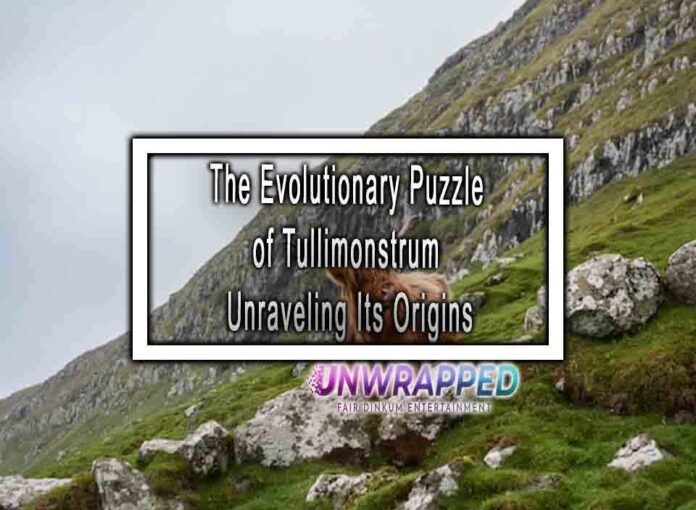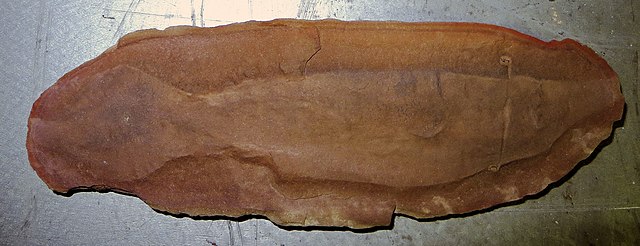Tullimonstrum, commonly known as the “Tully Monster,” is a mysterious and extinct marine creature that lived approximately 300 million years ago during the Carboniferous period. Unraveling the origins of Tullimonstrum has been an evolutionary puzzle, and scientists have made efforts to understand its place in the tree of life. Here’s an exploration of the enigmatic Tully Monster:
1. Distinctive Characteristics:
- Unique Appearance: Tullimonstrum had a peculiar appearance, characterized by a long tubular body, a proboscis with a toothed jaw at the end, and stalked eyes.
- Soft-bodied: Unlike many other fossils from the same time period, Tullimonstrum was soft-bodied, leaving only its organic imprints in the fossil record.

2. Discovery:
- Location: Fossils of Tullimonstrum were first discovered in the Mazon Creek fossil beds in Illinois, USA.
- Abundance: Despite being soft-bodied, Tullimonstrum fossils are relatively abundant in this fossil site.
3. Taxonomic Uncertainty:
- Classification Challenges: The classification of Tullimonstrum has been a subject of debate among paleontologists.
- Lack of Analogous Species: The creature lacks closely related or analogous species in the fossil record, making its classification challenging.
4. Possible Affinities:
- Invertebrate or Vertebrate?: Tullimonstrum’s exact placement on the tree of life has been elusive. Some studies suggested it might be related to invertebrates, while others proposed a vertebrate affinity.
- Soft Tissue Preservation: The exceptional preservation of soft tissues in Tullimonstrum fossils provides valuable insights but also presents challenges in determining its evolutionary relationships.
5. Functional Interpretations:
- Feeding Mechanism: The structure at the end of its proboscis, which resembled a jaw, led to various hypotheses about its feeding mechanism. Some proposed it was a predator, while others suggested it might have been a filter feeder.
6. Hypotheses on Behavior:
- Benthic Lifestyle: Some scientists suggested that Tullimonstrum lived on the seafloor, while others proposed a more active swimming lifestyle.
- Camouflage: The creature’s tubular body and eyes on stalks led to hypotheses about its potential use of camouflage or mimicry.
7. Ancient Ecosystem Context:
- Coexistence with Other Creatures: Tullimonstrum existed in an ancient marine ecosystem alongside various other organisms, including fish, mollusks, and arthropods.
- Ecological Role: Understanding Tullimonstrum’s ecological role within this ecosystem is essential for unraveling its evolutionary significance.
8. Preservation Challenges:
- Soft Tissue Preservation: The soft tissues of Tullimonstrum were preserved under specific fossilization conditions at Mazon Creek, contributing to the challenge of finding comparable specimens elsewhere.
- Limited Geological Range: Tullimonstrum fossils are mainly confined to the Mazon Creek deposits, limiting the temporal and geographic range for study.
The Tully Monster remains an intriguing enigma in the fossil record, and ongoing research and interdisciplinary efforts are essential for shedding light on its evolutionary origins and its place in the ancient seas of the Carboniferous period. The study of such unique organisms contributes to our broader understanding of the diversity and complexity of life throughout Earth’s history.











